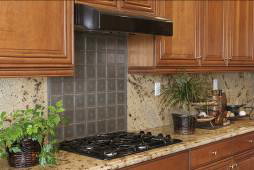FOR IMMEDIATE RELEASE | A PressPac Instant Replay*
ACS News Service Weekly PressPac: May 30, 2012
Kitchen exhaust fans vary in effectiveness in reducing indoor air pollution
“Performance Assessment of U.S. Residential Cooking Exhaust Hoods”
Environmental Science & Technology
Here’s the recipe from a new study for minimizing indoor air pollution from cooking – which can produce levels of indoor air pollution higher than those encountered in heavily polluted outdoor air: Turn on the range exhaust fan and cook on the back burners. The study appears in ACS’ journal Environmental Science & Technology.
Brett C. Singer and William W. Delp explain that cooking with gas burners on stovetops and in ovens can produce unhealthy levels of indoor air pollution. Exhaust fans mounted in hoods over cooktops and downdraft systems that suck air directly from the cooking surface can remove those pollutants. These systems vary widely in price, loudness, power consumption and effectiveness in removing pollution. But the authors note that there is no rating standard to help consumers know which hood is best at capturing pollutants. They set out to measure the performances of seven different over-the-range hood designs.
The scientists found that none of the devices performed well in all of the key functions: fan efficiency, efficiency in capturing polluted air for exhaust and sound levels. Two hoods that operated quietly and removed 70 to 90 percent of pollutants had high fan speeds that hurt their efficiencies. A third device, which proved to be the best at removing contaminated air from the burners and the oven, was so loud that it made normal conversation impossible. The authors suggest that the best option may not require buying a new hood at all: “Routine use of even moderately effective venting range hoods can substantially reduce in-home exposures to cooking and burner-generated air pollutants. Effectiveness can be substantially enhanced by preferential use of back versus front cooktop burners and by using higher fan settings.” The study includes a table comparing prices and performances of the models tested.
The authors acknowledge funding from the U.S. Department of Energy Building Technologies Program, HUD's Healthy Homes Program, the U.S. EPA Indoor Environments Division and the California Energy Commission's PIER program.
![]()
Contact
Science Inquiries: Michael Woods, Editor, 202-872-6293
General Inquiries: Michael Bernstein, 202-872-6042


